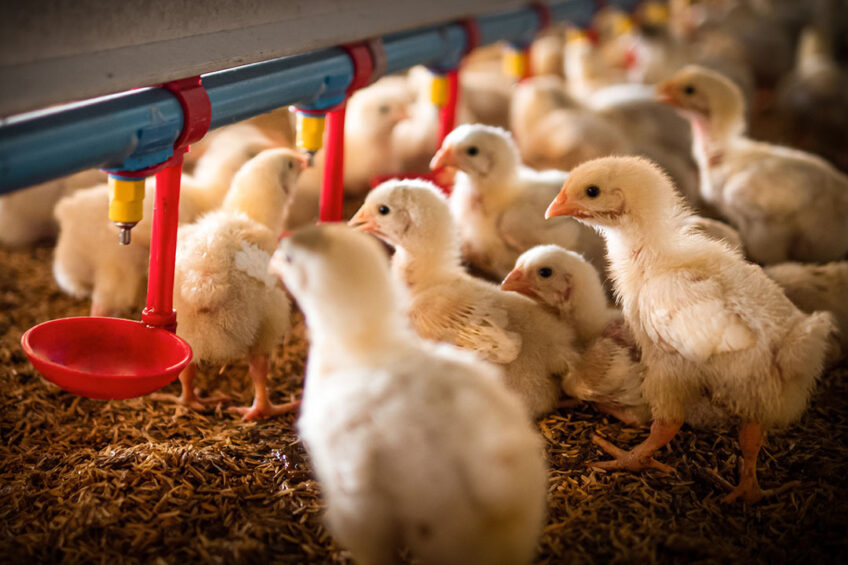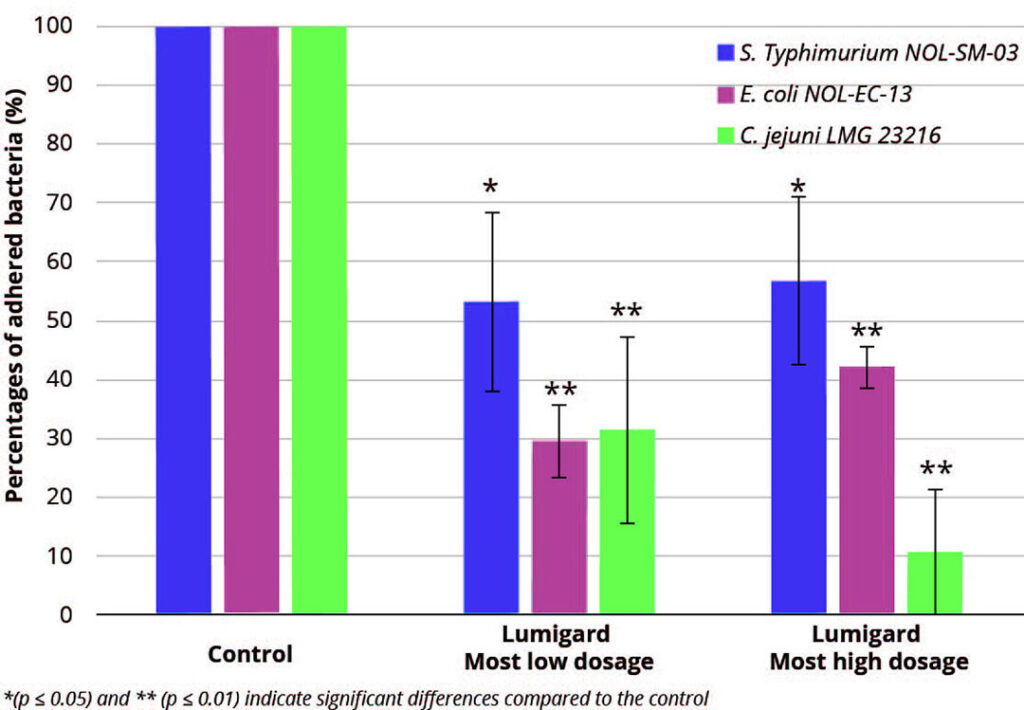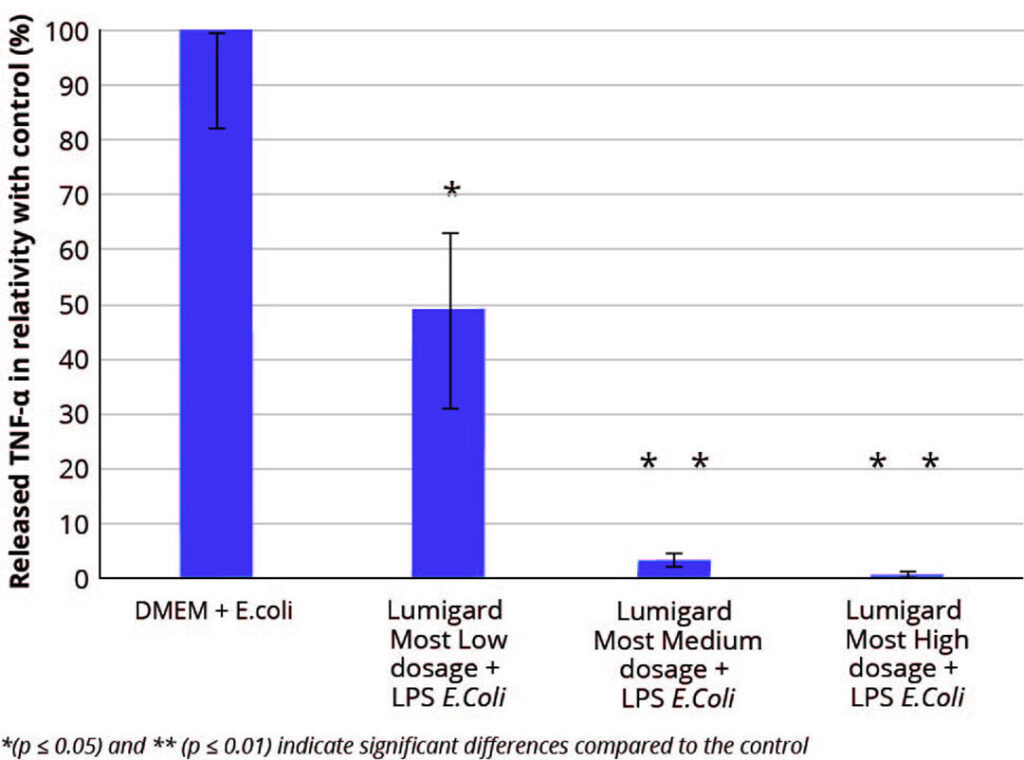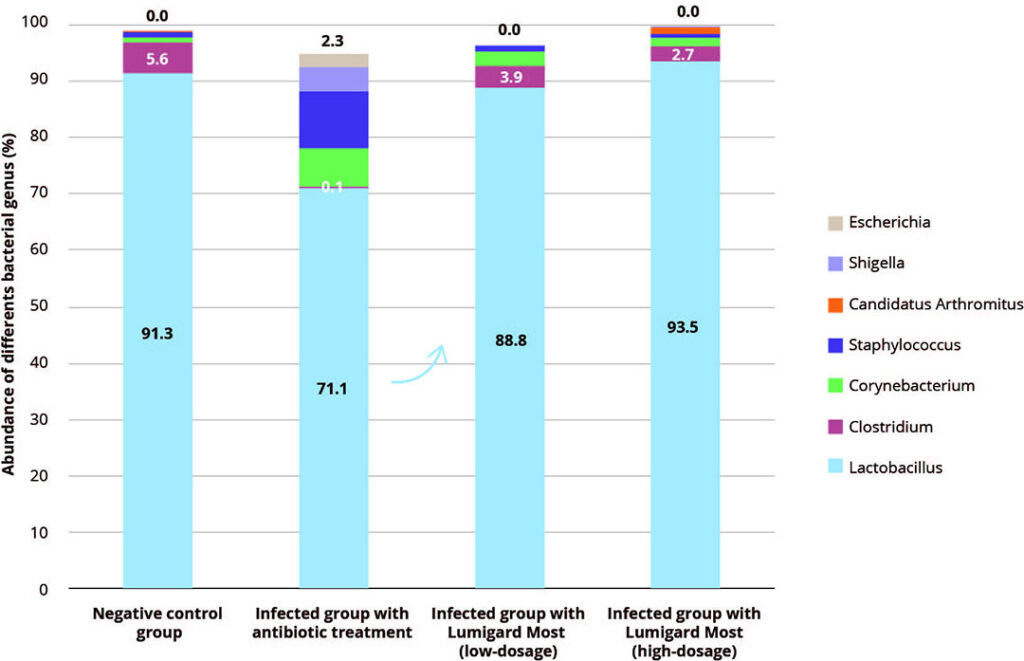Fatty acid esters for better modulation of microbiota

The microbiota influences the animal’s ability to digest food and reduces the colonisation of certain pathogenic microorganisms which can influence animal health and performance. Fatty acid esters can help beneficial bacteria and limit harmful pathogens, improving intestinal health.
Part of the Gut Health 2022 Special
Poultry producers are facing many challenges, associating competitivity and social expectations, all over the world. Health, security, and durability are more and more key issues for poultry production. Poultry and feed industries, have removed or reduced the use of antibiotics, after their banishment in the EU in 2006. Many feed additives have been used as their alternatives. Amongst them, fatty acid esters which can be an excellent solution to ensure both performance, and sustainability for poultry production.
What are the main properties of fatty acids esters?
The functionalities of short and medium chain fatty acids (SCFAs and MCFAs) on animal intestinal health are varied: antimicrobial properties, beneficial effects on gut barrier epithelium and immunity, improvement of nutrient intake and zootechnical performance.
Through their esterified forms, SCFAs and MCFAs contribute to facilitate their handling in industry and to expand their functionalities and effectiveness within the animal digestive system. By limiting the rapid absorption of fatty acids in the stomach, it allows them to reside longer in the lumen of the digestive tract to exert their beneficial activities.
Antimicrobial properties
Antimicrobial properties of fatty acids esters vary according to the length of the carbon chain. SCFAs and MCFAs from C6 to C10 are mainly recognised for their ability to limit bacterial colonisation and to control Gram-negative bacteria such as Salmonella, Escherichia coli and Campylobacter jejuni, whereas C12 MCFAs are almost known for their bactericidal activity, preferentially on Gram-positive bacteria such as Staphylococcus aureus, Clostridium perfringens or Enterococcus cecorum.
Lumigard Most, an association of different types of fatty acids, with complementary actions, appears as a relevant strategy to broaden the spectrum of activity toward the diversity of pathogens that can be encountered in animal production.
Figure 1 and Table 1 illustrate different mechanisms of Lumigard Most toward main pathogens from poultry.
Figure 1 – Percentage of adhesion of S. Typhimurium, E. coli and C. jejuni on HT-29 cells with fatty acid esters at low and high dosage.

Intestinal health and performance
Through in vitro/in vivo evidence, fatty acid esters have shown to limit the pro-inflammatory response due to challenges by pathogens or their toxins, to contribute to maintain a balance microbiota, thereby improving intestinal health, that has a direct impact on nutrient intake and the zootechnical performance of the animal.
Immunity
Poultry are animals constantly subjected to challenges due to the presence of pathogenic microorganisms or environmental factors, which lead to an activation of the immune system in the gastro-intestinal tract (GIT). This activation leads to the production of a set of specialised cells and signalling molecules, in particular pro-inflammatory cytokines such as tumour necrosis factor (TNF)-α, and interleukins (IL), like IL-8. The overproduction of these cytokines leads to damage and dysfunction of the intestinal mucosa and, consequently, poor growth of animals. Moreover, an overreaction of the immune system consumes energy that would otherwise be used for animal growth.
Recent data (Figure 2) highlighted the ability of Lumigard Most, to significantly reduce the production of TNF-α, one important pro-inflammatory molecule released by the host to infection.
Figure 2 – Effects of Lumigard Most on pro-inflammatory mediatorsTNF-α at different dosages on cells culture models after endotoxins challenges (LPS).

Composition of the intestinal microbiota
The microbiota influences the animal’s ability to digest food and reduces the colonisation of certain pathogenic microorganisms which can have a great influence on animal health and performance. SCFA, specifically butyrate, and MCFA do not typically exert strong effects on the microbial composition of the normal chicken GIT. However, in situations in which the GIT microbial homeostasis is challenged or susceptible to change i.e., during periods of stress or pathogen challenges, supplementation with SCFA, MCFA and their esterified forms seems to reduce the impact of the challenge on the microbiota. The use of these compounds has been particularly studied to control Necrotic Enteritis (NE), a global concern in poultry, caused by some Clostridium perfringens strains. The microbiota analysis, using 16S illumina sequencing, in a NE challenge model composed of 4 groups: an infected untreated group, an infected treated group with antibiotic and 2 groups supplemented with Lumigard Most at 2 dosages (low- and high-dosage) are presented in Figure 3.
Figure 3 – Effects of Lumigard Most (low- and high-dosage) on ileal microbiota composition compared to non-treated group and treated groups in a poultry NE challenge.

The supplementation with Lumigard Most allowed to reduce the abundance of Clostridium, this reduction was near 50% for the higher concentration tested, compared to the non-treated control. Moreover, compared to treated groups, fatty acid esters allowed to maintain abundancies of beneficial bacteria such as Lactobacillus and limit the preponderance of other pathogens such as Staphylococcus, Shigella and Escherichia (Figure 3). These results, in addition to better performance also observed in this study, highlight the use of fatty acid esters as a viable solution to reduce the use of AGPs.
Relevant solution
Glycerides, and more specially SCFAs and MCFAs, as esters, are a consistent solution in poultry. By combining antimicrobial effect, action on intestinal microbiota and performance, Lumigard Most is an efficient solution in poultry production, to support performance in free-antibiotic production, thanks to a better overall intestinal health.
References are available upon request.
All information only for export outside Europe, USA and Canada.
Join 13,000+ subscribers
Subscribe to our newsletter to stay updated about all the need-to-know content in the dairy sector, two times a week.






